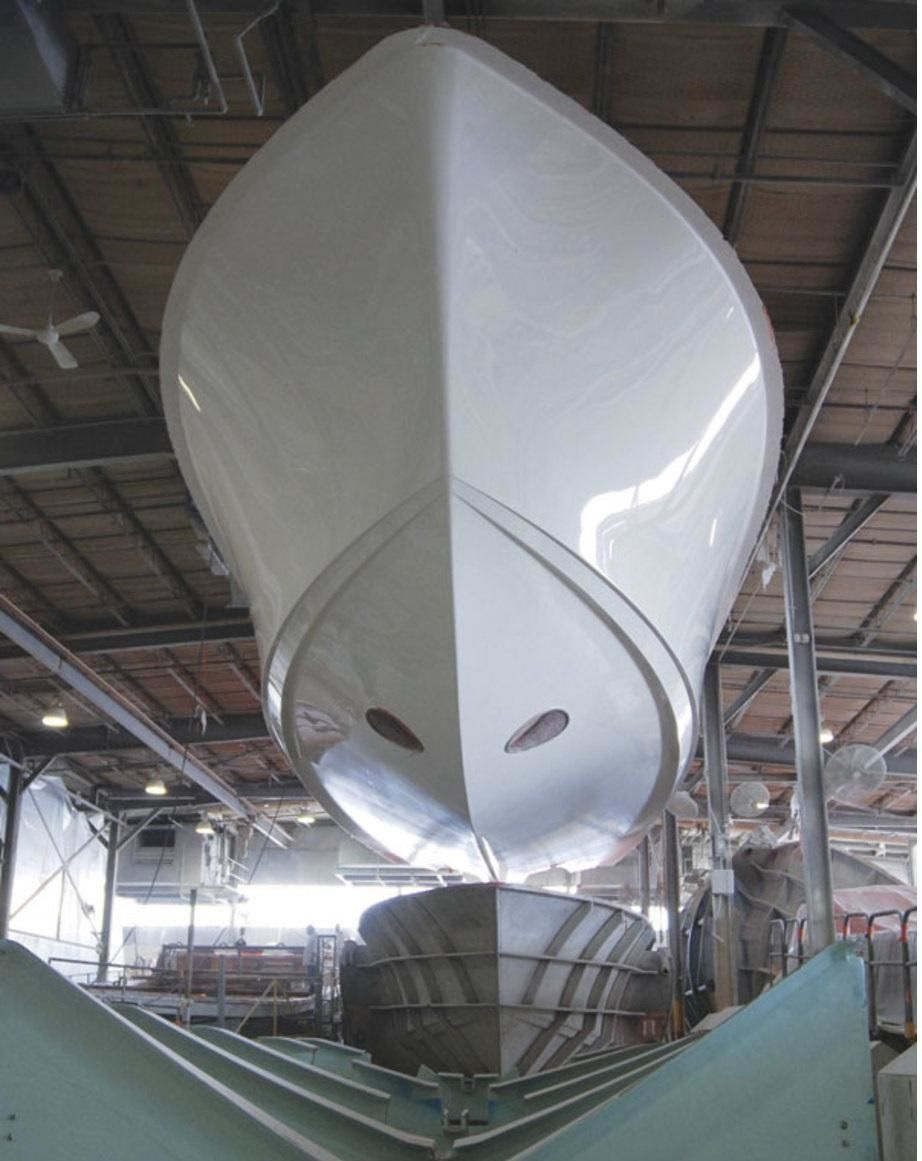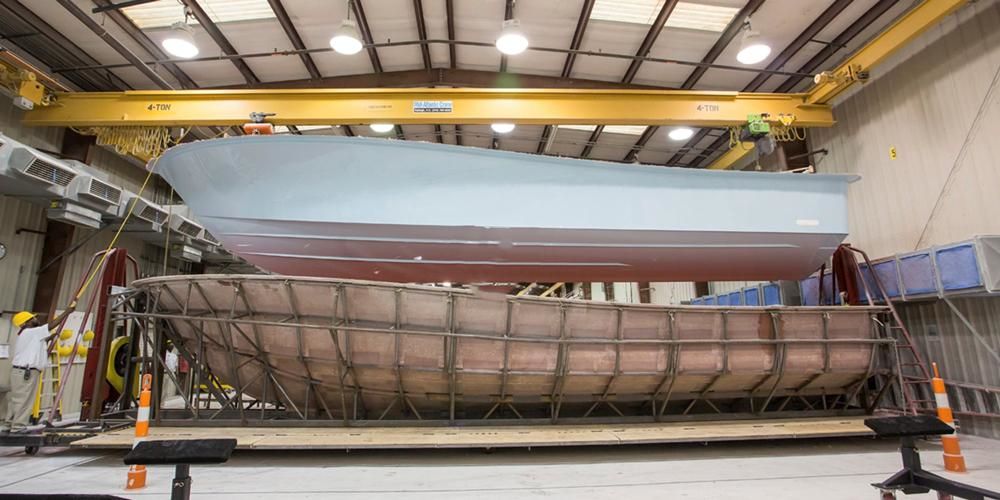
A fiberglass hull, also known as a fiberglass-reinforced plastic (FRP) hull, refers to the main structural body or shell of a watercraft, such as a boat or yacht, that is primarily constructed using fiberglass materials. This type of hull is widely used in boat manufacturing due to its numerous advantages. Here’s some information about fiberglass hulls:
Asia composite materials (Thailand)co.,Ltd
The pioneers of fiberglass industry in THAILAND
E-mail:yoli@wbo-acm.com WhatsApp :+66966518165
Composition: A fiberglass hull is constructed using layers of fiberglass fabric or matting that are impregnated with resin. The fiberglass material provides strength and durability, while the resin binds the fibers together and forms a solid composite structure.
Advantages: Fiberglass hulls offer several advantages, including high strength-to-weight ratio, resistance to corrosion, light weight, ease of shaping, and the ability to create smooth and aesthetically pleasing surfaces. They are also less susceptible to rot, insect damage, and water absorption compared to traditional wooden hulls.
Applications: Fiberglass hulls are used in a wide range of watercraft, from small recreational boats and fishing vessels to larger sailboats, powerboats, yachts, and even commercial vessels. They are also common in the construction of personal watercraft (PWC) and other waterborne vehicles.
Lightweight: Fiberglass is significantly lighter than materials like steel or aluminum, which can result in improved fuel efficiency and performance for boats with fiberglass hulls.
Corrosion Resistance: Fiberglass is inherently resistant to corrosion from saltwater and other environmental factors, reducing the need for regular maintenance and protective coatings.
Design Flexibility: Fiberglass can be molded into various shapes and designs, allowing for a wide range of boat hull styles and configurations to meet specific requirements.
Maintenance: While fiberglass hulls require less maintenance compared to wooden hulls, they still need regular inspection and maintenance, including repairing potential damage and keeping the exterior in good condition.
Fiberglass hulls have been a significant advancement in boat construction, offering a combination of strength, durability, and versatility. They have largely replaced traditional wooden hulls in many boat-building applications due to their numerous benefits. Proper care and maintenance can help ensure the longevity and performance of fiberglass hulls.

Fiberglass-reinforced plastic (FRP), also known as fiberglass, is a composite material consisting of a synthetic resin matrix reinforced with fiberglass fibers. It possesses properties similar to steel, such as water resistance and corrosion resistance, as well as a smooth and aesthetically pleasing surface finish. However, it also has some drawbacks, such as lower stiffness and wear resistance. The quality of FRP products can vary significantly due to factors like the quality of raw materials, the skill of the workers, production conditions, and environmental factors.
Compared to steel and wooden boats, FRP boats require less maintenance due to the excellent properties of FRP itself. However, like all materials, FRP can age, although the aging process is relatively slow. Even with a protective coating of gelcoat resin on the boat’s surface, which forms a protective layer with a thickness of only 0.3-0.5 millimeters, the surface can still be damaged and thinned through regular friction and environmental erosion. Therefore, minimal maintenance does not mean no maintenance, and proper maintenance can not only preserve the boat’s attractive appearance but also extend its lifespan.
In addition to routine maintenance of machinery and equipment, here are some key points for maintaining and preserving FRP boats:
Avoid contact with sharp or hard objects. FRP hulls can be scratched or damaged when they come into contact with rocks, concrete structures, or metal components at the shore. Protective measures should be taken, such as installing impact-resistant and wear-resistant metal and rubber guards at locations that are frequently exposed to friction, such as the bow, near the dock, and along the sides. Wear-resistant rubber or plastic soft materials can also be placed on the deck.
Repair damage promptly. Regularly inspect the boat’s hull for signs of resin peeling, deep scratches, or exposed fibers. Any damage should be repaired promptly, as water infiltration can accelerate the deterioration of the boat’s structure.
When not in use, especially during the winter months, store the boat onshore. FRP has some water-absorption properties, and water can gradually penetrate the interior through micro-channels along the interface between fiberglass and resin. In winter, water infiltration can worsen because the water may freeze, expanding the pathways for water infiltration. Therefore, during the winter months or when the boat is not in use, it should be stored onshore to allow the infiltrated water to evaporate, gradually restoring the boat’s strength. This practice can extend the boat’s lifespan. When storing the boat onshore, it should be cleaned first, placed on suitable supports, and ideally stored indoors. If stored outdoors, it should be covered with a tarp and well-ventilated to prevent moisture buildup.
These maintenance practices can help ensure the longevity and performance of FRP boats.
Post time: Oct-16-2023




